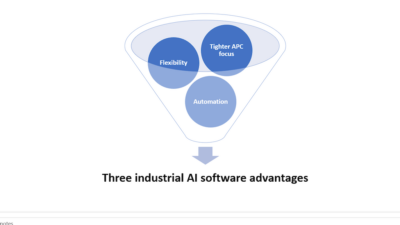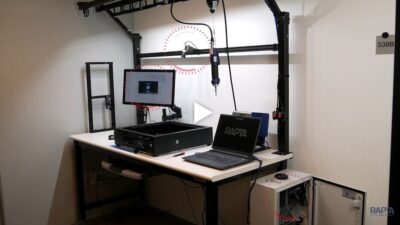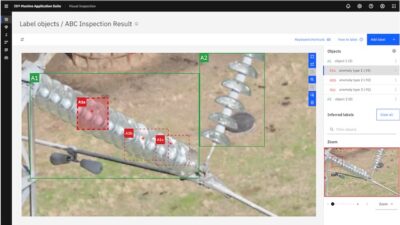In an interview with Control Engineering China, Advantech's Chen Yongcheng discussed the emergence of AIoT, and how it will enhance intelligent manufacturing.

Learning Objectives
- Learn how can end-users enhance the intelligence of their production equipment.
- Understand what technologies will be relied on to support and lead the upgrades required by the intelligent device industry.
- Discover how traditional automation technology and emerging IT technology can empower the intelligent device industry.
AIoT Insights
-
AIoT refers to the combination of artificial intelligence (AI) and the Internet of Things (IoT). It is a new technological system that connects and integrates physical devices, sensors and IoT to achieve intelligent interaction and data sharing between devices.
-
AIoT is particularly important in emerging intelligent device segments such as semiconductors, lithium batteries, energy storage, photovoltaics, 3C electronic manufacturing, electric vehicles and vehicle-road collaboration.
-
In the next three to five years, it could well become a trend for industrial edge AI platforms with AIoT characteristics to replace traditional industrial control computers.
Currently, the global manufacturing industry is undergoing a profound transformation, and digitalization, networking and intelligent manufacturing are driving the trend. As industry embarks on this journey, the intelligence of production equipment will be a prerequisite for achieving more intelligent manufacturing overall.
How can end-users enhance the intelligence of their production equipment? What technologies will be relied on to support and lead the upgrades required by the intelligent device industry? How can traditional automation technology and emerging IT technology empower the intelligent device industry?
Recently, Control Engineering China interviewed Chen Yongcheng, deputy general manager of Advantech (China) industrial IoT business group, who has been deeply involved in the intelligent device industry, to provide an in-depth interpretation of the how the intelligent device industry is navigating these challenges.
AIoT: leading a new era of intelligent equipment manufacturing
Effectively meeting the requirements of intelligent manufacturing requires that end-users start with their production equipment. By introducing intelligent devices into the production site, various terminal devices can be interconnected, achieving intelligent perception and communication between various devices, and laying a physical foundation for the ultimate realization of intelligent manufacturing.
As end-users move toward an intelligent manufacturing model, Yongcheng believes that the artificial intelligence of Things (AIoT) will play a key role. AIoT refers to the combination of artificial intelligence (AI) and the Internet of Things (IoT). It is a new technological system that connects and integrates physical devices, sensors and IoT to achieve intelligent interaction and data sharing between devices. This enables objects to perceive the environment, obtain information, automatically perform tasks and ultimately make possible intelligent interaction between humans and machines.
The implementation of AIoT relies on the support of multiple key technologies, which build the foundation for device interconnection, data exchange and intelligent control. These technologies include embedded systems, sensing technology, communication technology, data processing and storage technology, IoT security, artificial intelligence, machine learning, visualization, interactive human-machine interfaces (HMI) and more.
Previously, devices emphasized their own control functionality, but they increasingly need the capacity for networking, perception and data analysis as well. Driving the upgrading of the intelligent device industry through AIoT is an inherent requirement for equipment intelligence. Yongcheng stated that AI and IoT in AIoT are akin to the human brain and senses. The senses are used to collect information from the surroundings, which is then transmitted to the brain for processing. Through this process, the combination of AI and IoT in intelligent devices can achieve higher efficiency, strengthen data management and analysis, and improve interaction between humans and machines. AIoT will lead device manufacturing towards a new era of intelligent manufacturing.
In Yongcheng’s view, AIoT is particularly important in emerging intelligent device segments such as semiconductors, lithium batteries, energy storage, photovoltaics, 3C electronic manufacturing, electric vehicles and vehicle-road collaboration.
Creating AIoT intelligent device solutions
With the rise and in-depth application of AIoT, Advantech has launched a one-stop AIoT product with capabilities including intelligent perception and communication, image acquisition cards, motion control, edge AI platforms, GPU server industrial cloud platforms and others. Among them, the edge AI platform is one of several important aspects of an overall AIoT intelligent device strategy.
“Previously, our traditional industrial controllers emphasized CPU computing, while for AIoT smart devices, more and more GPU computing is needed, so we are now replacing the original industrial controllers with industrial edge AI platforms more often.” According to Yongcheng, intelligent devices often need to use machine vision and machine learning for defect detection or product image recognition, which requires an increase in computing power. However, upgrading a CPU from the 8th to the most recent 12th generation could more than double the price, while only improving computing performance by 10-20%. By contrast, adding a new GPU graphics card to an 8th generation CPU could improve performance by three to five times at a substantially smaller cost increase.
Yongcheng emphasized that industrial edge AI is not as simple as plugging GPU cards into traditional industrial control computers. Instead, it requires an overhauled architecture and new system integration, including various I/O, USB, Wi-Fi, and 4G/5G interfaces, as well as power and operating systems. This not only allows end-users to lower power consumption, but also enables miniaturization and ease-of-use for industrial edge AI platforms.
To this end, Advantech and Nvidia have collaborated to launch edge computing software and hardware products based on Nvidia’s Jetson platform. These products have been applied in various use-cases, including intelligent factories, vehicle-road collaboration, AGV intelligent cars, autonomous driving buses, electric vehicle power exchange systems and intelligent robots.
“After achieving low power consumption and miniaturization, industrial edge AI platforms can overturn our traditional thinking mode and be applied to markets that we previously wanted to do but couldn’t do,” said Yongcheng. Compared to the traditional rack mounted industrial control computer and GPU graphics card approach, the compact industrial edge AI platform can achieve a maximum power consumption of only 150 watts, and its efficiency can still reach 60% to 70% that of the traditional approach. This efficiency can fully meet the needs of on-board, AGV and intelligent devices. In the next three to five years, it could become a trend for industrial edge AI platforms with AIoT characteristics to replace traditional industrial control computers.
Stone Shi, executive editor-in-chief, Control Engineering China. Edited by David Miller, content manager, Control Engineering, CFE Media and Technology, [email protected].
CONSIDER THIS
How can the implementation of AI make your operation more intelligent?




